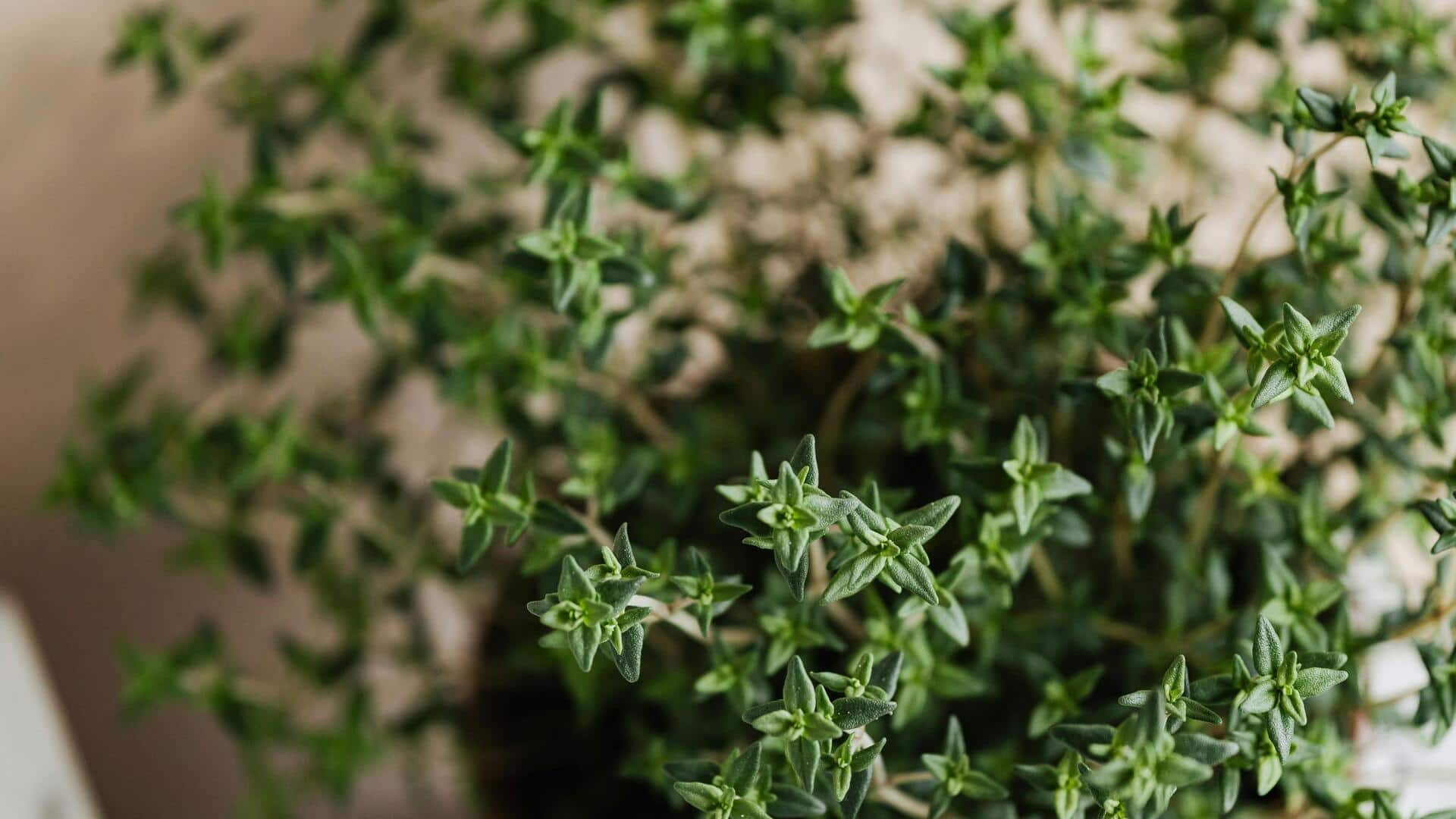
How to grow thriving thyme plants indoors
What's the story
Growing thyme indoors can be a rewarding experience, providing you with fresh herbs for your culinary creations. This aromatic herb is known for its resilience and adaptability, making it an ideal candidate for indoor gardening. With the right conditions and care, you can enjoy a thriving thyme plant all year round. Here are some practical tips to help you grow thyme indoors successfully.
Tip 1
Choosing the right container
Selecting an appropriate container is crucial for growing thyme indoors. Choose a pot with drainage holes to prevent waterlogging, which can damage the roots. A container that is at least six inches deep will provide enough space for the roots to grow. Consider using terracotta pots as they allow better airflow and moisture evaporation, creating an ideal environment for thyme.
Tip 2
Providing adequate light
Thyme needs plenty of sunlight to thrive indoors. Place your plant near a south-facing window where it can soak up at least six hours of direct sunlight every day. If natural light is insufficient, consider using grow lights to supplement the light requirements. Position the lights about 12 inches above the plant and keep them on for 12 to 16 hours daily.
Tip 3
Maintaining proper soil conditions
The right soil mix is essential for healthy thyme growth. Use well-draining soil with a slightly acidic pH level between six and eight. A mix of potting soil with sand or perlite can improve drainage capabilities. Avoid overwatering by letting the top inch of soil dry out before watering again, ensuring that your plant doesn't sit in excess moisture.
Tip 4
Controlling temperature and humidity
Thyme flourishes in moderate temperatures between 60 degrees Fahrenheit and 70 degrees Fahrenheit (15 degrees Celsius and 21 degrees Celsius). Avoid placing your plant near drafts or heating vents that might cause temperature fluctuations. Indoor humidity levels should be kept low; if necessary, use a dehumidifier or keep windows slightly open to maintain optimal conditions without making it too humid inside.